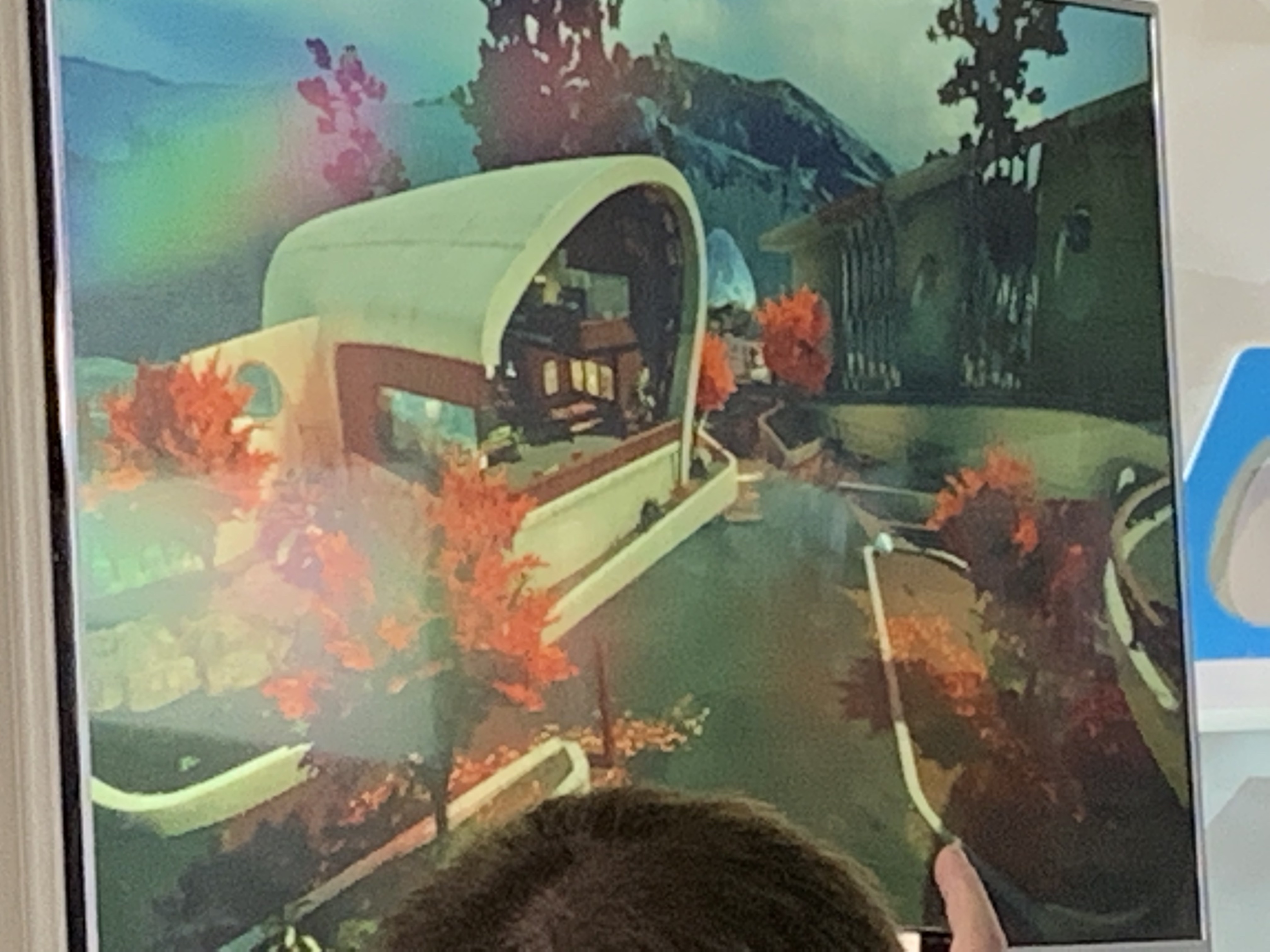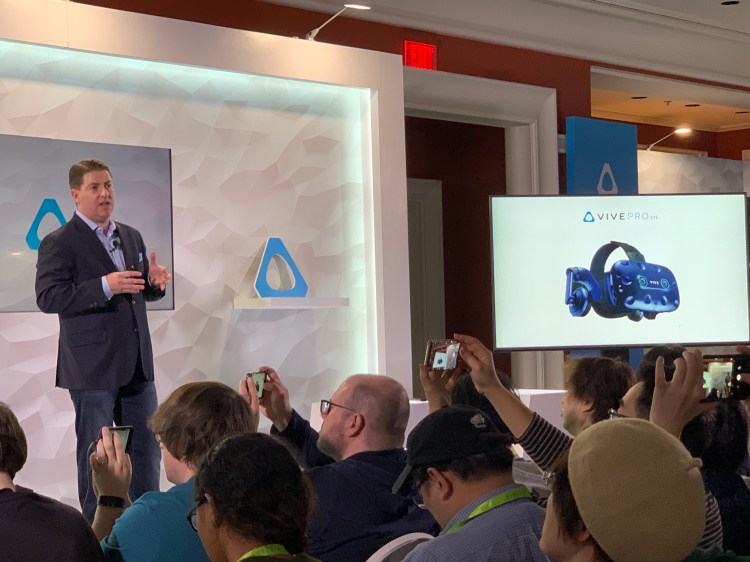At a 2019 CES press conference today, Vive announced two new VR headsets: Vive Pro Eye, a version of Vive Pro with eye-tracking hardware, and Vive Cosmos, a next-generation headset that the company is teasing as being capable of connecting to PCs and other yet-to-be-announced devices.
Vive Pro Eye’s key differentiation from the standard Vive Pro is fully integrated eye tracking, which will enable the company’s new highest-end PC headset not only to track the user’s gaze, but also to support foveated rendering — a technology that reduces a GPU’s processing demands by focusing almost exclusively on sharply rendering the center of the image where the eye is actually looking. Eye-tracking will be usable in games, gaze-assisted menu navigation, flight training that lets coaches see what students were looking at during practice runs, and more.
One issue to consider: Vive Pro Eye will become an even higher priced alternative to Vive Pro; it won’t replace it. For that reason, HTC is saying that both Vive Pro and Vive Pro Eye are really being targeted at enterprise customers rather than PC users — except for enthusiasts who are really looking to push the performance envelope. The company didn’t announce pricing, but says it’s working to keep the price difference as minimal as possible.

Above: HTC Vive Pro Eye.
HTC also announced Viveport Infinity, the world’s first “infinite VR subscription service.” Users will be able to access the top 500 apps from Viveport for a single monthly fee, and will have an account that works across Vive, Oculus Rift, Vive Focus, and all of the Wave VR partners, including Pico and others. It will be launching on April 5; the price isn’t yet known.
The company also says that it will be launching versions of Mozilla’s previously announced Firefox Reality VR web browser and Amazon Sumerian for Viveport. HTC also will offer MLB and Red Bull 2D and 360-degree experiences in Viveport.

Above: Vive Reality’s Origin.
HTC also discussed the Vive Reality System, what the company describes as a seamless integration of hardware, software, and services — a way to experience VR within the “new age of spatial computing” through experiences, rather than a traditional app launcher. The goal is to create an intuitive way of gluing together the company’s offerings based on current paradigms, rather than classic computing user interfaces.
According to HTC, customers want frictionless experiences that work across multiple devices; people spend over 17 hours a week browsing the internet, so using Mozilla’s browser is part of the equation. More importantly, the company is also introducing Origin, a central hub for VR experiences that looks like Sony’s PlayStation Home, using 3D avatars within a lush 3D space. Origin will display art and artifacts every time you enter, give you access to simple collaborative drawing tools, and include a “Lens” that enables you to easily move from your current location to new destinations — including ones within Viveport Infinity.

Above: HTC Vive Cosmos.
Last but not least, the company also teased Vive Cosmos, a new VR headset specifically designed to work with Vive Reality. Though the presentation initially seemed to suggest that Cosmos might work by itself or pair with a PC, the actual situation is somewhat different: It will require either a PC or another processing device yet to be announced. Cosmos is designed to be easy to flip on and off, and will ship with new light ring-equipped controllers that are easily tracked by the headset.
The company was not ready to announce pricing or availability details for either new model, but Cosmos seems further off than Pro Eye; HTC said that it was only offering a sneak peek of Cosmos today, and will have more to share in the near future. A representative for HTC also said that Vive Focus, a standalone device initially released in China and now being sold to enterprise customers in 38 markets, will continue to have an enterprise focus for the time being.

